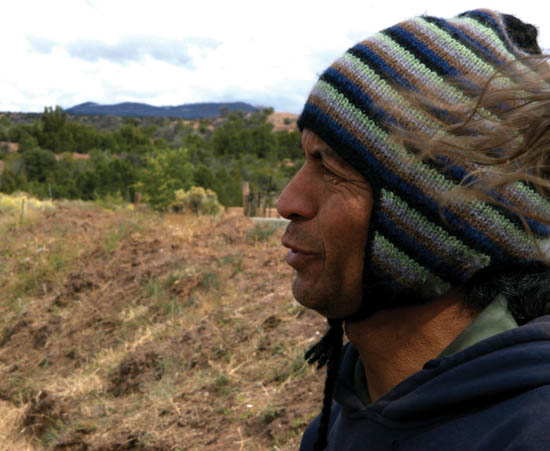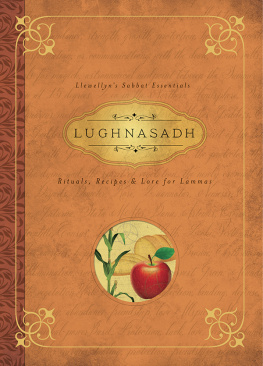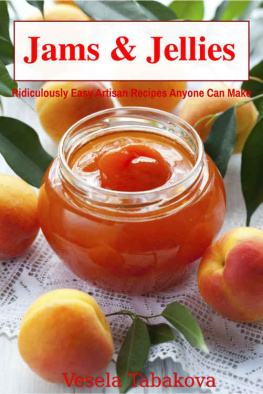Lisa Fox and Richard Harris - Artisan Farming: Lessons, Lore, and Recipes
Here you can read online Lisa Fox and Richard Harris - Artisan Farming: Lessons, Lore, and Recipes full text of the book (entire story) in english for free. Download pdf and epub, get meaning, cover and reviews about this ebook. genre: Politics. Description of the work, (preface) as well as reviews are available. Best literature library LitArk.com created for fans of good reading and offers a wide selection of genres:
Romance novel
Science fiction
Adventure
Detective
Science
History
Home and family
Prose
Art
Politics
Computer
Non-fiction
Religion
Business
Children
Humor
Choose a favorite category and find really read worthwhile books. Enjoy immersion in the world of imagination, feel the emotions of the characters or learn something new for yourself, make an fascinating discovery.
- Book:Artisan Farming: Lessons, Lore, and Recipes
- Author:
- Genre:
- Rating:4 / 5
- Favourites:Add to favourites
- Your mark:
- 80
- 1
- 2
- 3
- 4
- 5
Artisan Farming: Lessons, Lore, and Recipes: summary, description and annotation
We offer to read an annotation, description, summary or preface (depends on what the author of the book "Artisan Farming: Lessons, Lore, and Recipes" wrote himself). If you haven't found the necessary information about the book — write in the comments, we will try to find it.
Artisan Farming: Lessons, Lore, and Recipes — read online for free the complete book (whole text) full work
Below is the text of the book, divided by pages. System saving the place of the last page read, allows you to conveniently read the book "Artisan Farming: Lessons, Lore, and Recipes" online for free, without having to search again every time where you left off. Put a bookmark, and you can go to the page where you finished reading at any time.
Font size:
Interval:
Bookmark:

Artisan Farming
Lessons, Lore, and Recipes
Digital Edition v1.0
Text 2008 Richard Harris
Photographs 2008 Trent Edwards
All rights reserved. No part of this book may be reproduced by any means whatsoever without written permission from the publisher, except brief portions quoted for purpose of review.
Gibbs Smith, Publisher
PO Box 667
Layton, UT 84041
Orders: 1.800.835.4993
www.gibbs-smith.com
ISBN: 978-1-4236-1341-1
First of all, very special thanks to Ellen Kleiner of Blessingway Authors Services, a world-class editor without whose enthusiasm and continuing encouragement this book would never have seen the light of day.
Thanks to all the wonderful folks at Gibbs Smith, Publisher, especially to Leslie Cutler Stitt for her thoughtful editing and her patience, which I know we tried sorelyand, of course, to Gibbs Smith himself, a true visionary.
Thanks to those who have provided insights and inspiration during the writing of this book: Emigdio Ballon of Tesuque Pueblo; Jo Ann Baumgarther of Wild Farm Alliance; Eric Biderman (Ribera); Teague and Kozma Channing of Gemini Farm (Truchas); Nancy Nathanya Coonridge of Coonridge Organic Goat Cheese (Pie Town); Les Crowder of Sparrowhawk Farm (Socorro); Tom Delehanty of Pollo Real (Socorro); Lana and Monte Fastnacht of La Monts Wild West Buffalo (Bosque Farms); Doug Findley of Heidis Raspberry Farm (Corrales); Charles Gore of the New Mexico Agricultural Statistics Service; Rick Kingsbury of Pecos Grass-Fed Beef (Ribera); Willem Malten of Cloud Cliff Bakery (Santa Fe); Antonio Manzaneres of Shepherds Lamb (Los Ojos); Becky Mullane of Dixon Apples (Cochiti Lake); Joanie Quinn, Marketing and Education Coordinator for the New Mexico Organic Commodity Commission; Matt Romero of Romero Farms (Dixon); Danny and Joey Sam of the Picuris Buffalo Project (Picuris Pueblo); Monte Skarsgard of Los Poblanos Organics (Los Poblanos Historic Inn & Cultural Center, Los Ranchos de Albuquerque); Gordon Tooley of Tooleys Trees (Truchas); Dr. Ron Walser, New Mexico State University Extension Fruit Specialist; and to the New Mexico Farm and Ranch Museum and the pueblos of Santo Domingo, Taos, San Ildefonso, Tesuque, and Picuris.
Thanks also to all those who have granted Lisa interviews for Farming Through the Seasons, including Estevan Arellano, Carl Berghofer, Daniel Carmona, Michael Combs, Stanley Crawford, Richard Deertrack, David Fresquez, Brenda Fresquez, Gonzalo Gallegos, Miley Gonzalez, Aaron Greenwald, Funny Hendrie, Bob Maldonado, Fred Martinez, Gail Minton, Randy Murray, Patty Nelson, Lynda Prym, Emily Romero, Miguel Santistevan, Lan and Charlotte Slater, and Eduardo Velarde.
I also want to express my appreciation to Remington, my cattle dog, who traveled thousands of miles around New Mexico with me on research trips for this book, played in all the orchards and barnyards, chased the goats and bison, and peed on fence posts from Costilla to Las Cruces.
And finally, a great big burst of thanks to Cultural Energy, the Taos-based nonprofit group creating media voices for youth, arts, and activism. They present Lisas radio show Farming Through the Seasons, for which many of the people in this book were originally interviewed.
May they all live long and prosper.
Artisan: One who produces something (as cheese or wine) in limited quantities, often using traditional methods.
Beautiful things spring up in the most unlikely places. It used to be that you could recognize organic small-farm produce by the wormholes. As Joni Mitchell sang back in the day, Give me spots on my apples but leave me the birds and the beesplease! (Big Yellow Taxi). But thats no longer the case. One factor that helps todays small growers make a living where past generations of farmers could not is that their produce is a sensory feast. It not only tastes better but looks better than the stuff you find in supermarkets. The artisan produce thats available in farmers markets today, dazzling in its array of greens, whites, oranges, reds, yellows and occasional blues, tantalizes the eye as much as the taste buds. A fresh-picked tomato, shallot, or crookneck squash, or even a lowly turnip, can be an aesthetic wonder when grown with love.
This book got started at the other end of the food chainthe messy part. I drove down to Albuquerque for the annual New Mexico Organic Farming Conference. Held shortly before the start of the spring planting season, the conference drew hundreds of farmersAnglo, Hispanic, and American Indian, of all ages from student interns to octogenarianswho had obtained organic certifications for their farms or were interested in doing so. The lineup of some forty presenters ranged from New Mexico Secretary of Agriculture Miley Gonzales to Emigdio Ballon, the Incan elder from Bolivia who had been recruited to revitalize agriculture at Tesuque Pueblo. There was also a trade expo where vendors were selling live earthworms by the pound, natural concoctions for controlling grasshoppers and other pests, jugs of compost tea (which you use to fertilize soil but wouldnt want to drink), and actual dirt, a rarer commodity than you might think in New Mexico.
Inspired by watching our local farmers market in Santa Fe grow over the years from a handful of hippies selling carrots and variously colored eggs into a busy community gathering place that draws as many as 5,000 people during peak season, I went to the Organic Farming Conference with an eye toward writing about where the food at the market came from. The conference opened my eyes to the unexpectedly large number of organic farmers in New Mexico. I would later learn that the state has far more organic farms than surrounding southwestern states. In fact, the New Mexico Organic Commodities Commission provides inspectors to certify farms in more populous neighboring states, like Arizona, which has no such agency of its own.


Emigdio Ballon at Tesuque Pueblo
Why, I wondered, would small farmers, organic or otherwise, choose to struggle with the exceptional challenges of growing crops or raising livestock in New Mexico, of all places, where the landscape is mostly a boundless landscape of clay and sandstone with absurdly little water? In the months that followed, I would pose this question to farmers who had moved here from much more fertile places like Virginia, Wisconsin, and California. Their answers revealed what makes New Mexico farming unique.
New Mexico has been spared from the ravages of big agribusiness by the fact that most farms here are tinysometimes as small as two to five acres, rarely larger than fifty. There is neither enough flat ground nor enough irrigation water to plant larger acreages. Furthermore, most farms along the 450 miles of the Ro Grandethe states only major riverdate back to seventeenth-century Spanish land grants that had been split up between heirs over many generations until, in the mid-twentieth century, a new generation of the old families left the old Spanish-speaking villages to seek better-paying urban jobs. It would be impossible for a large corporation to buy up enough contiguous small farms to put together a section of land suitable for farming with big modern machinery. By the same token, it was fairly easy for young, idealistic, educated aspiring farmers to find parcels of land small enough to be worked independently.
Font size:
Interval:
Bookmark:
Similar books «Artisan Farming: Lessons, Lore, and Recipes»
Look at similar books to Artisan Farming: Lessons, Lore, and Recipes. We have selected literature similar in name and meaning in the hope of providing readers with more options to find new, interesting, not yet read works.
Discussion, reviews of the book Artisan Farming: Lessons, Lore, and Recipes and just readers' own opinions. Leave your comments, write what you think about the work, its meaning or the main characters. Specify what exactly you liked and what you didn't like, and why you think so.













